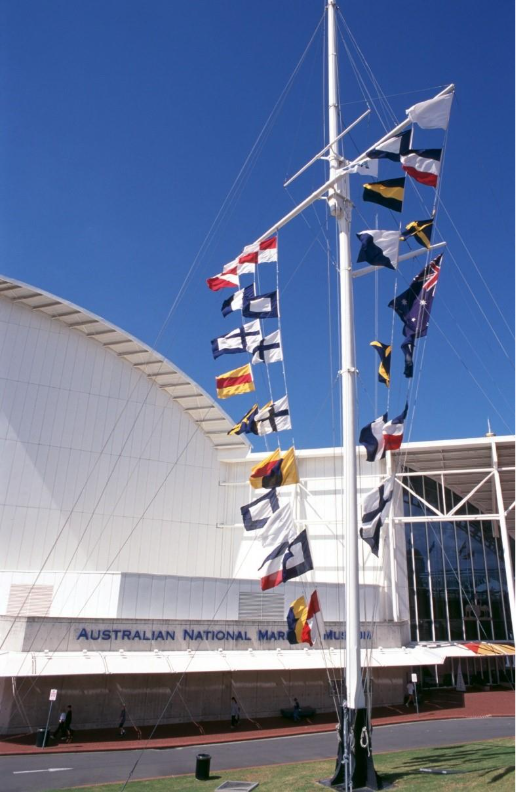The Australian National Maritime Museum is proud to announce the return of the iconic, historic signal mast, following a comprehensive refurbishment that preserves its legacy as a symbol of Australia's naval heritage. The mast will be reinstalled in the museum's forecourt in time for Remembrance Day 2025, where it will once again serve as a focal point for daily flag-raising ceremonies and commemorative events.
Originally erected in 1912 at Garden Island, the signal mast played a vital role in naval communications, using signal flags to relay messages to ships in Sydney Harbour.
It was built at the high northern tip of the island. The mast signalled by flag to all naval vessels entering, lying in or leaving Port Jackson. Later it displayed meteorological data every 30 minutes for all mariners. The signal station also used visual flashing and semaphore.
Originally standing at 72 metres, in 1945 it had the middle section removed because it was a hazard to Catalina and Sunderland flying boats taking off from Rose Bay.
After decades of service, it was removed in 1978 due to timber deterioration and later restored and installed at the museum in 1991, coinciding with its opening. It now stands at a height of 20.7 metres.
The recent refurbishment ensures the mast's structural integrity and longevity, allowing it to continue its role as a living monument to Australia's maritime and military history. The reinstallation aligns with the museum's commitment to preserving and showcasing significant artefacts that reflect the nation's diverse cultural and naval traditions.
Importantly, the mast's return forms part of the museum's The World Remade program, a year-long series of exhibitions, events and activations marking the 80th anniversary of the end of World War II. This initiative explores how the war reshaped Australia's society, identity and place in the world, and included highlights such as War Brides, Secret Strike and guided tours of the MV Krait.
'The signal mast is more than a historic structure—it's a symbol of connection, communication, and commemoration,' said Ms Daryl Karp AM, Director and CEO. 'Its return in time for Remembrance Day reinforces our dedication to honouring those who have served and to engaging the public with Australia's rich maritime story.'
Each day, museum staff raise a selection of flags on the mast, including the Australian National flag, the Aboriginal and Torres Strait Islander flags, the Blue Mud Bay flag, and the museum flag. These ceremonies reflect the museum's inclusive approach to storytelling and its recognition of Australia's First Nations peoples and multicultural heritage.







